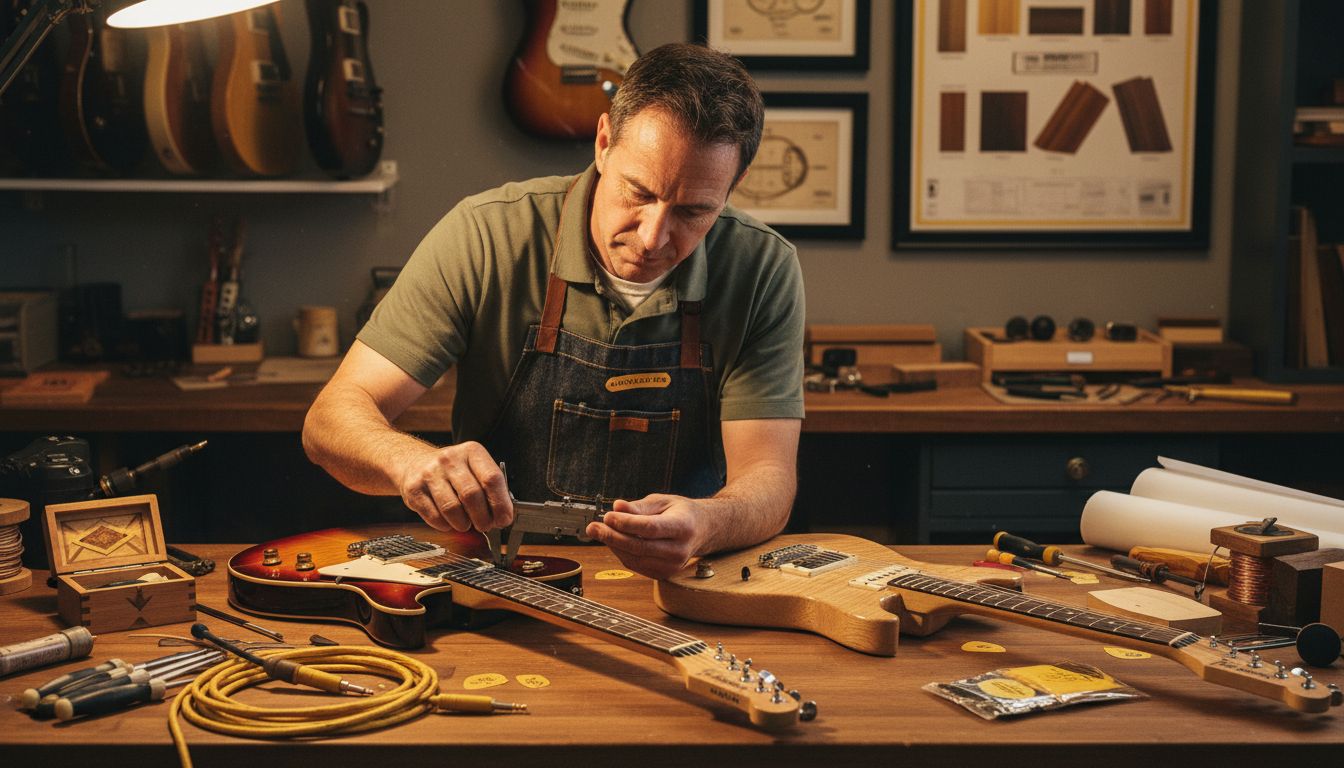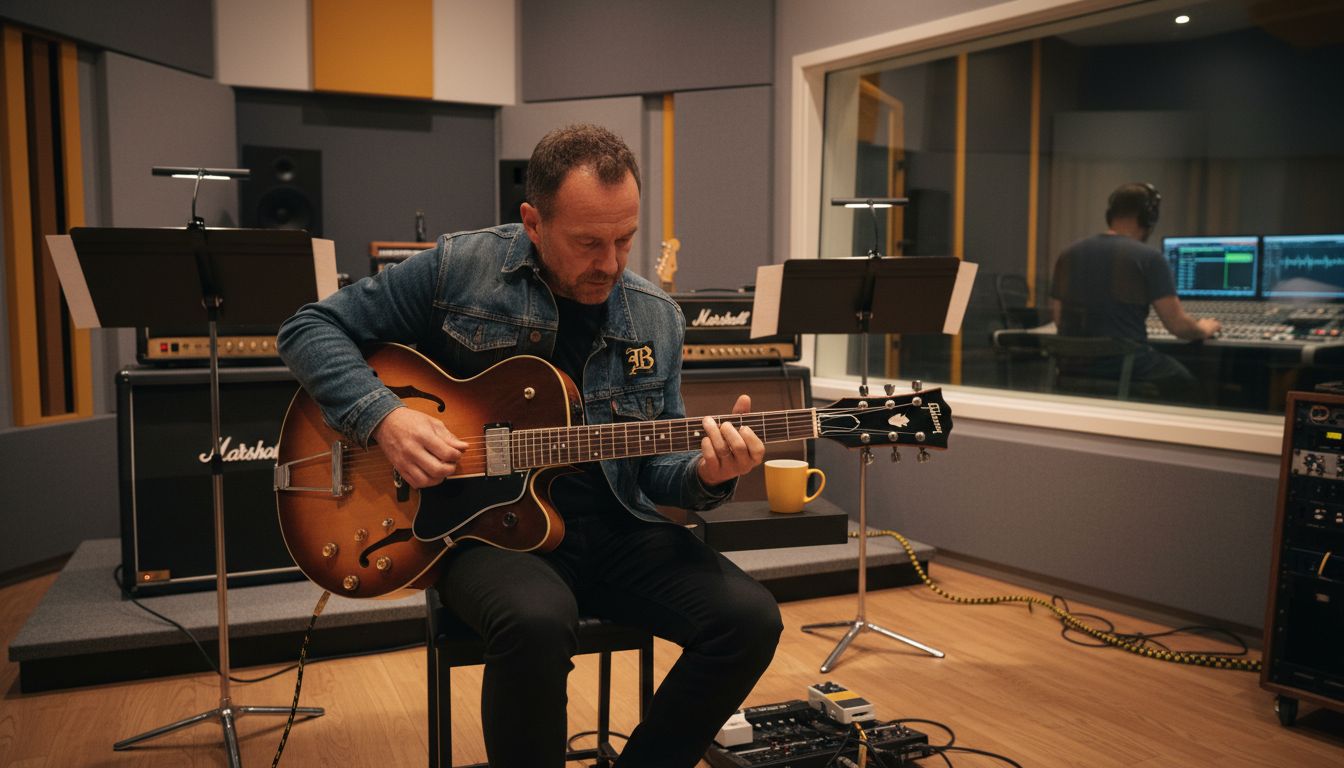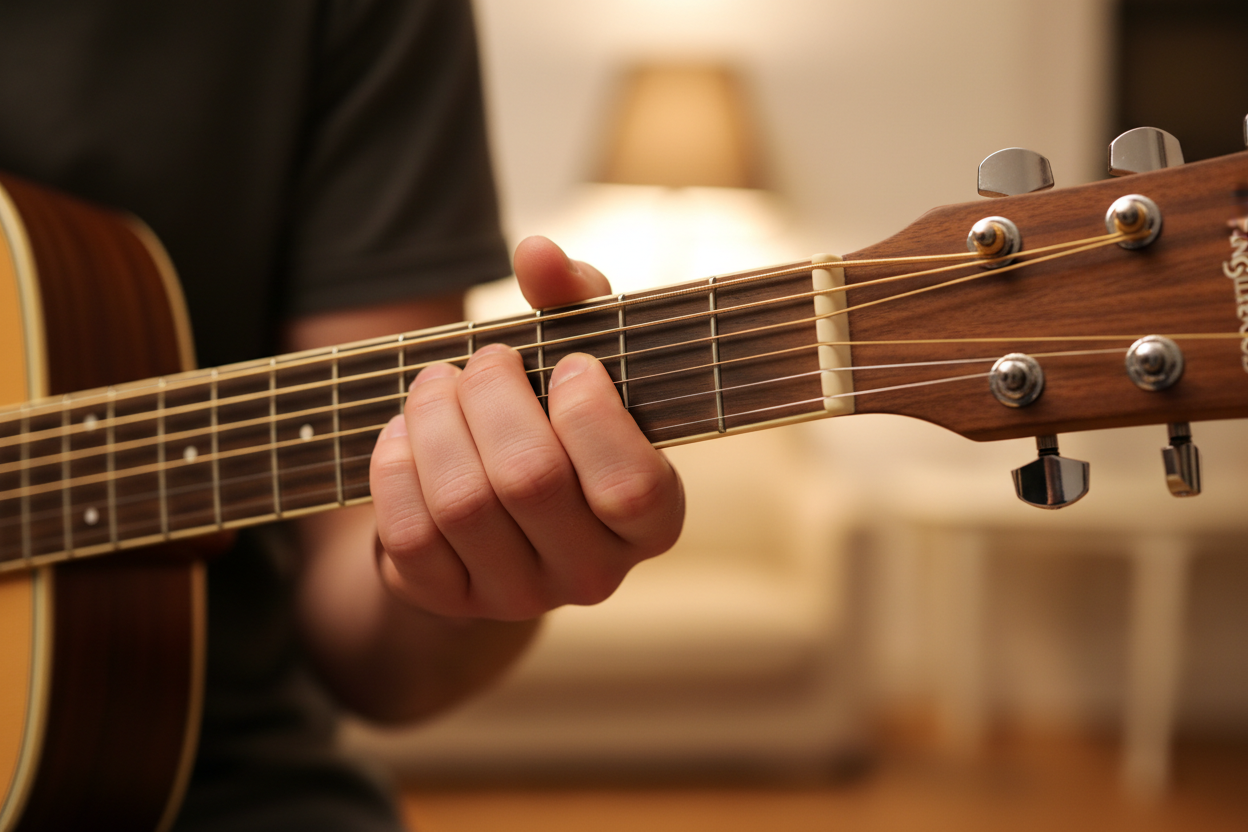If you’ve ever listened to Dire Straits and wondered how Mark Knopfler gets that smooth, expressive guitar sound, you’re not alone. His playing is instantly recognizable and packed with personality. But it’s not just about having the right gear—it’s about understanding the unique approach he brings to the instrument. Before you even plug in, it’s worth taking a closer look at the way Knopfler uses his hands, his sense of timing, and his feel for melody. Let’s start by digging into the heart of his sound: his playing technique.
Knopfler’s technique is a masterclass in subtlety and control. Unlike most rock guitarists, he almost never uses a pick, preferring instead to play fingerstyle. This gives his playing a soft, articulate touch and allows him to blend rhythm and lead in ways that just aren’t possible with a plectrum. He’s also known for his dynamic control, going from gentle, whispery lines to punchy, aggressive riffs—all with just his fingers. If you want to sound like Knopfler, getting comfortable with fingerstyle is absolutely essential.
- Fingerstyle, Not Flatpicking: He uses his thumb for the bass notes and his index and middle fingers for melodies and chords. This lets him play super clean and articulate lines, even when things get fast.
- Mixing Rhythm and Lead: Knopfler is a master at blending chords and licks, often in the same phrase. You’ll hear him jump from rhythm to lead without missing a beat.
- Rakes, Pull-Offs, and Slides: He loves to rake his fingers across the strings, toss in smooth pull-offs, and slide into notes for that vocal, singing quality.
- Dynamic Touch: One of his secrets is how he controls the volume and attack with just his fingers. He can go from whisper-quiet to biting lead just by digging in a little harder.
While technique is crucial, the guitars you choose can also make a big difference in capturing Knopfler’s sound. Over the years, he’s used a handful of iconic instruments, each bringing its own flavor to his music. The right guitar can help you get closer to those classic tones, whether you’re chasing the glassy shimmer of “Sultans of Swing” or the metallic chime of “Romeo and Juliet.” Let’s take a look at the main guitars that have shaped his legendary sound.
- Fender Stratocaster: This is his go-to for that classic, glassy tone you hear on “Sultans of Swing.”
- Gibson Les Paul & Junior: For chunkier, more powerful sounds—think “Money for Nothing.”
- Pensa-Suhr Custom: Used in later years for versatility.
- National Style O Resonator: For those haunting, metallic fingerpicked parts on “Romeo and Juliet.”
Of course, a great guitar needs a great amp to really shine. Knopfler’s amplifier choices have always been about clarity and responsiveness, giving him a clean canvas that reacts to every nuance of his touch. Whether he’s playing in the studio or on stage, his amps help deliver the dynamic range and tonal richness that define his playing. If you want to get close to his sound, paying attention to your amp setup is just as important as the guitar itself.
- Fender Vibrolux: Early Dire Straits, super clean and dynamic.
- Music Man HD 130: Main amp for much of the band’s run.
- Mesa Boogie with Marshall Cabs: For a bigger, more powerful sound.
- Soldano SLO 100: His main live amp in his solo years.
While Knopfler is famously minimalist when it comes to effects, the few pedals he does use are carefully chosen to enhance his natural tone rather than overpower it. He’s not the type to rely on a huge pedalboard—just a handful of tools that help him add sustain, a bit of grit, or some extra atmosphere when the song calls for it. If you want to keep your sound authentic, less really is more in this case.
- Dan Armstrong Orange Squeezer Compressor: For sustain and smoothness.
- Crowther Hotcake Overdrive: When he wants a little extra grit.
- Morley Volume Pedal: For those swells and volume tricks.
- MXR Analog Delay: Adds some slapback and thickness.
- Wah Pedal (half-cocked): Essential for the “Money for Nothing” riff.
Listening is just as important as practicing when you’re trying to nail someone’s style. Knopfler’s most famous work with Dire Straits is packed with examples of his technique, tone, and musicality. By studying these tracks, you’ll get a sense of how he applies all these elements in real songs—and you’ll pick up plenty of inspiration along the way. Here are some classic Dire Straits songs where his signature sound is front and center.
- Sultans of Swing: Fingerstyle Stratocaster at its best.
- Money for Nothing: That iconic, mid-heavy riff.
- Brothers in Arms: Smooth, emotional Les Paul lead.
- Romeo and Juliet: Delicate resonator fingerpicking.
- Telegraph Road: Epic dynamics and fingerstyle mastery.
So, you’ve got the technique, the gear, and the inspiration—what’s next? Here’s a step-by-step guide to help you put it all together. These steps will get you well on your way to capturing Knopfler’s unique sound, whether you’re jamming at home or playing on stage. Remember, it’s all about feel, taste, and making every note count.
- Lose the Pick: Practice fingerstyle—thumb for the bass, fingers for melody.
- Play with Dynamics: Use your fingers to control volume and attack. Make it expressive!
- Learn the Licks: Dive into those classic Dire Straits songs and focus on the subtle slides, rakes, and phrasing.
- Get the Gear: A Strat for the classic stuff, a Les Paul for the heavier tunes, and a clean tube amp. Add a compressor and volume pedal if you want to get closer.
- Keep Effects Simple: Less is more. A little compression and delay will do the trick.
- Focus on Feel: Knopfler’s magic is in his touch ; make every note count, and don’t be afraid to leave space.
“I was doing things with just my thumb and two fingers that I couldn't do with a pick. But I still use a plectrum now and again for strumming or for playing on acoustic tracks.” - Mark Knopfler
If you’re feeling inspired to chase that Knopfler sound, you’ll want to make sure you have the right gear and advice to guide you. That’s where Music Street comes in. Based in the UK, Music Street is a fantastic resource for guitarists of all levels. They offer a wide range of electric guitars, amps, and effects—plus their friendly, knowledgeable staff can help you find exactly what you need, whether you’re after your first Strat or looking to upgrade your amp. With their expert guidance and great selection, you’ll be well-equipped to start your own journey towards that classic Dire Straits tone.




Share:
10 Top Heavy Metal Bands Ever
The Top 10 Most Iconic Metal Riffs of All Time